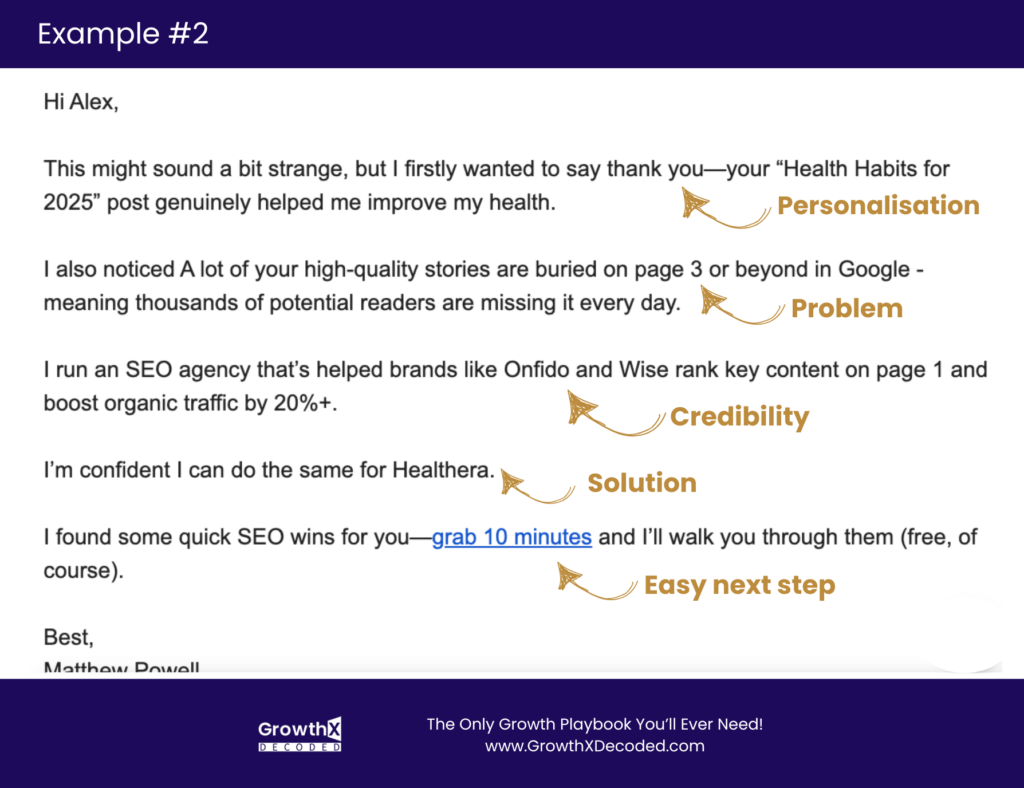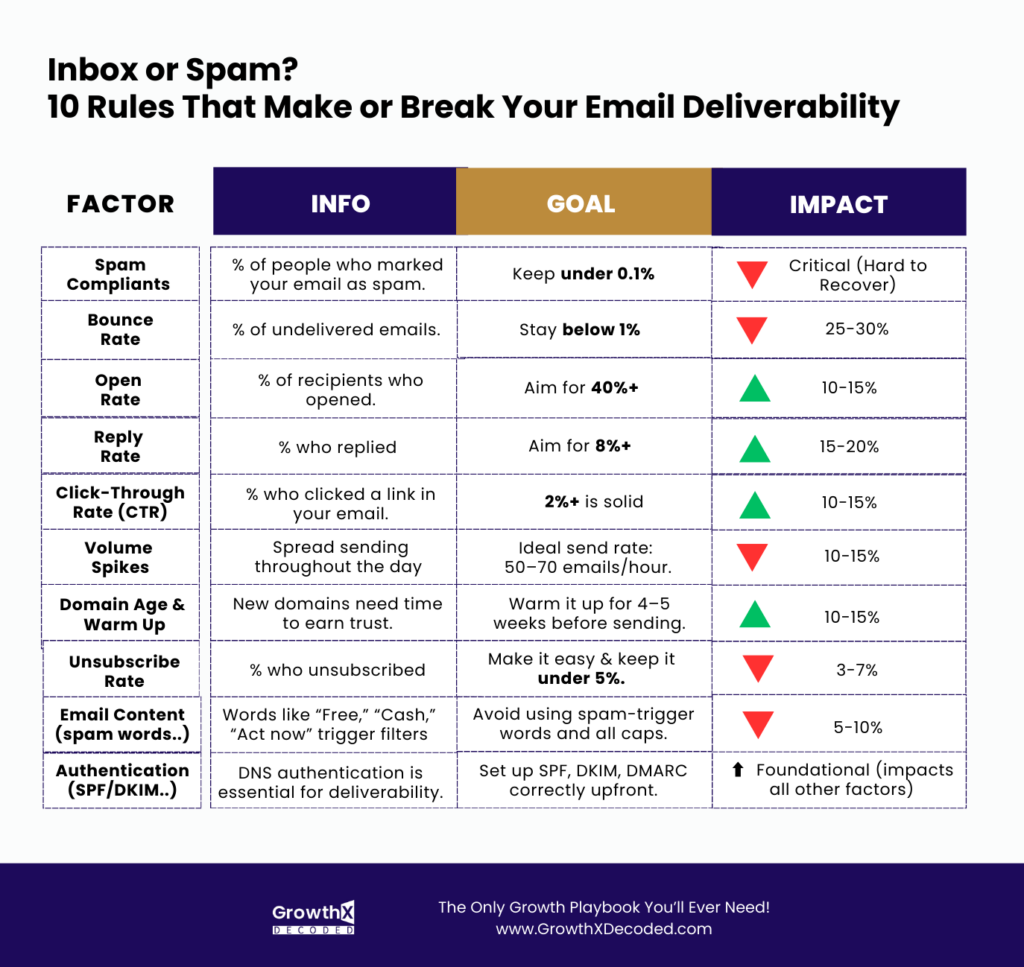Cold Email Mastery: The Full System Behind 1,000s of Replies
Never send cold emails from your main domain—it risks your deliverability and puts your entire business email communication at stake. Instead, use a lookalike domain (e.g. yourbrand.com → your-brand.com) and gradually warm it up to avoid spam filters.
Plan ahead: warming takes 2–3 weeks before your emails can reliably land in inboxes.
Check the full guide on domain setup and warming here.
After sending 50,000+ cold emails, I found one structure that consistently drives the highest reply rates:


On the flip side, some widely shared cold email templates may look polished (even praised by marketing pros)—but they actually suck. Here’s why.
Whatever you do, don’t cut corners on this step. If you’re not ready to put in serious time and creativity, there’s no point in running cold email campaigns. This marketing channel is too crowded, and the risks are real. One wrong move can tank your deliverability and brand reputation.
You’re better off sending 20 highly personalized, hyper-targeted emails than blasting 1,000 semi-generic ones that get ignored—or worse, flagged as spam.
Why do most cold emails flop? Because they’re too broad and desperately untargeted—one generic message blasted to thousands of people with completely different needs.
The fix? Focus on a niche group with a shared pain point:
• Running a B2B SaaS? Target companies still using outdated competitors you can replace.
• Offering sales training? Go after teams that just onboarded new SDRs.
• Selling ergonomic desk chairs? Target companies that just went fully remote and are offering home office stipends.
Once you’ve decided on your target companies, go to LinkedIn and navigate to each one’s team (Company > Titles) to find the decision-maker—someone who feels the pain your solution solves and has the authority to act (like a CMO, CEO, VP of Sales, or CFO).
Now it’s time to gather lead data. Here are three proven methods (I recommend option #2: doing it yourself with a lead gen tool).
| Method | Pros | Cons |
| #1 Freelancer (or Lead Gen Company) | Saves time; easy to delegate. | Can get pricey; often miss the right target audience even with detailed instructions. |
| #2 Lead gen tools (my go-to: RocketReach.co) | Pulls various contact details from the person whose LinkedIn profile you shared | Somewhat manual and slow—but the high quality is worth it. |
| #3 ChatGPT | Fast—just input a clear prompt describing your ideal customer persona. | As of May 2025, still inconsistent with accurate contact details. |
Even if your lead gen tool or freelancer claims the emails are verified, always double-check yourself. One bad batch can tank your sender reputation.
I recommend using ZeroBounce—it’s been reliably accurate in my experience. Only send emails marked as Valid. I even skip “Catch-All” addresses just to be safe. Aim for zero bounces—your domain reputation depends on it, among other things:

Even if your cold email is packed with value and feels tailored just for them, it won’t be read unless your subject line grabs attention and earns the click.
Here’s the full guide on how to write subject lines that actually get clicks.
Start by offering value—not asking a stranger to hop on a call.
What’s the easiest, low-commitment next step they’d say yes to? Try:
• A free resource they can explore
• A 2-min video tailored to their business
• A one-pager with company-specific insights
• A case study from a similar client
• A short, no-strings audit callMake it useful, make it easy—then they’ll want to talk.
Most cold emails won’t get replies right away—and that’s totally normal. Here’s how to follow up with a bit of grace (and just the right touch of FOMO 😉).